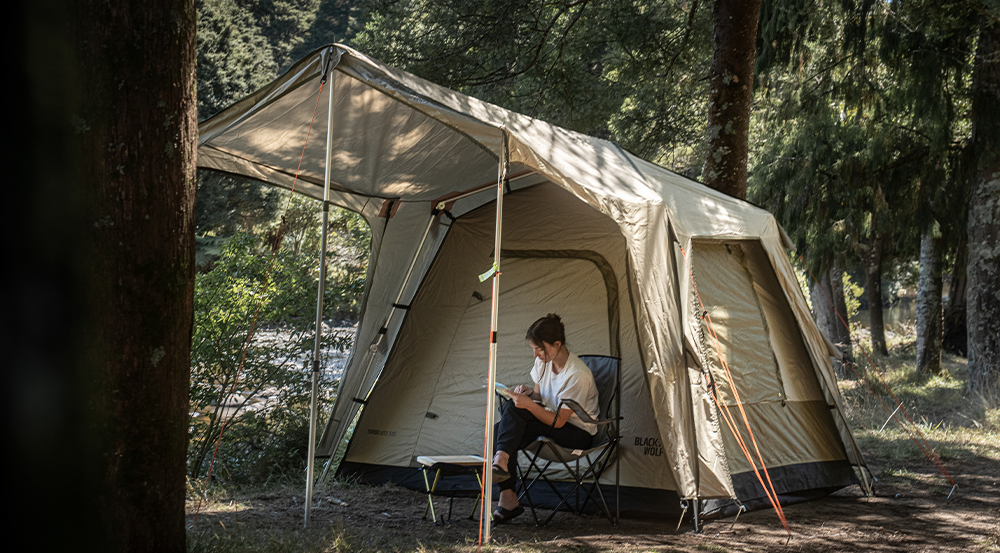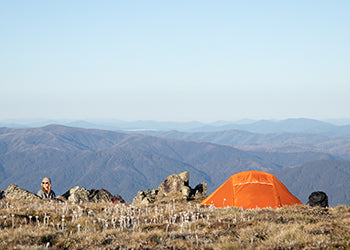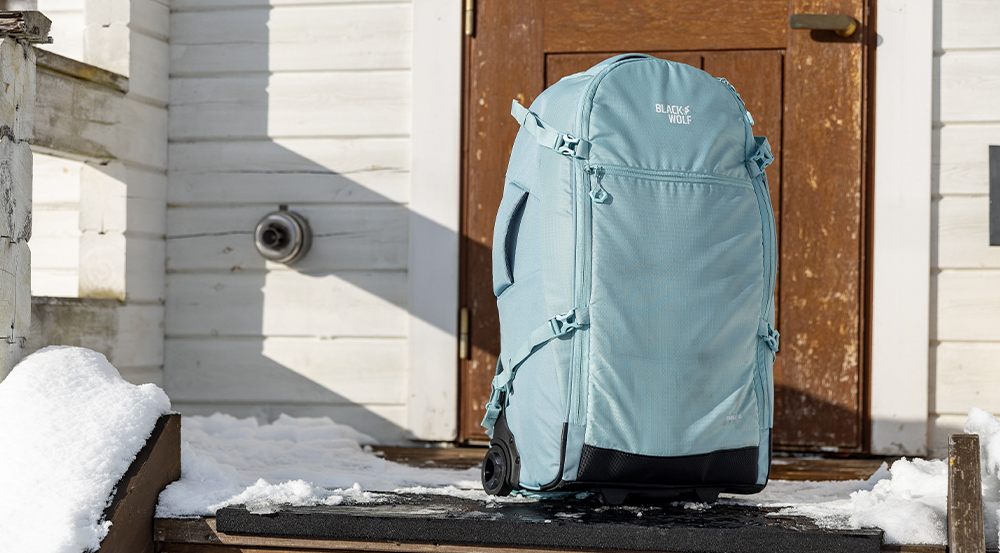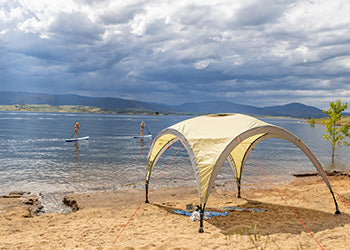FAQs
We're here to make your life a whole lot simpler. Take a look through our FAQs and hopefully we'll be able to help you out. To dig a little deeper into each topic, you can check out the dedicated sections on the site.
Once your order is on its way, we’ll send you an email with your tracking number. From there, you can follow your gear’s journey via Australia Post until it arrives at your doorstep. Your next adventure is just a package away!
We’re quick to get your gear on its way, but if you contact us right away, we might still be able to make a change. Reach out to us via Chat or email us at customerservice@blackwolf.com.au.
If it’s too late to modify your order, don’t worry—we’ve got a simple returns process in place, and you can choose the return option that works best for you. Here’s how it works.
Just a heads-up: Clearance and flash sale items are final sale, and we can’t cancel those orders once they’re placed. These items can only be returned if they qualify under Warranty. If you do need to cancel, we’ll offer store credit use in our online store as reimbursement, so you can find something else you love!
Absolutely! Just reach out to us via chat or at customerservice@blackwolf.com.au, and we’ll help calculate shipping costs based on your location and order. Let’s make it happen!
At BlackWolf, we’re committed to providing reliable, high-quality gear for your adventures. That’s why our sleeping bags undergo rigorous testing to meet International Standards, ensuring you’re equipped for any conditions you encounter.
Understanding temperature ratings is essential for selecting the right sleeping bag. These ratings provide a solid guideline, but remember, your overall comfort will also depend on factors like your sleeping pad, clothing, and the specific weather conditions.
Here’s a quick breakdown of the three temperature ratings you’ll find across our range:
- Comfort Temperature: This is the lower limit at which a user can relax, lying on their back, and still feel warm. It's designed for optimal comfort during your adventures.
- Limit Temperature: This indicates the minimum temperature at which a user, curled up for warmth, can remain in thermal equilibrium without feeling cold. It’s perfect for those chilly nights under the stars.
- Extreme Temperature: This rating signifies the very low temperatures where there’s a risk of hypothermia. While we strive to keep you safe, we advise using this rating with caution and proper preparation.
Our expert team encourages you to choose a sleeping bag with a lower temperature rating than the coldest conditions you expect. For adventures during the cooler months, look for bags specifically designed to handle the lower temperatures you’re expecting
Choosing between down and synthetic insulation for your sleeping bag is an important decision.
Let’s break it down!
Down Insulation:
- Loved by hiking and camping enthusiasts for their fantastic warmth-to-weight ratio.
- Typically pricier, but their performance can make them worth it. A higher loft (measure of “fluffiness”) means better warmth retention with less material.
- A higher loft also allows for easier packing and less bulk.
- Features like baffle placement helps to distribute down more evenly and prevent cold spots, keeping you cosy all night.
- One downside - Down doesn’t handle wet conditions well, so keep that in mind if rain is in the forecast for your travels.
Synthetic Insulation:
- Modern synthetic fills have evolved to better mimic down, making them a reliable alternative. BlackWolf sleeping bags feature a range of high-quality synthetic fills, including Clusterloft — a premium down alternative — alongside Powerloft and bonded fibres, ensuring you stay comfortable no matter the weather.
- Generally, synthetic bags are more budget-friendly, making them an excellent choice if you’re looking for value.
- They perform well in wet conditions, making them ideal for adventures where you might encounter moisture.
Quick Summary:
- Down: Best warmth-to-weight ratio, higher loft = more warmth and easier packing, but can be pricier and struggles in wet conditions.
- Synthetic: More affordable, wet-weather friendly, great if you don’t need to pack light.
Whether you’re an experienced adventurer or just starting out, choosing the right sleeping bag insulation is all about matching your gear to your adventures. Happy exploring!
Washing a Synthetic-Filled Sleeping Bag
Taking care of your synthetic-filled sleeping bag will help it last longer and stay in top condition for all your adventures. Here’s how to wash it properly:
- Hand Washing: You can hand wash your synthetic sleeping bag just like a down bag to keep it in great shape.
- Machine Washing: If you prefer to use a machine, only use a large front-loading washer. Wash on a gentle cycle with a specialist sleeping bag soap or a mild, non-detergent soap.
- Avoid Top Loaders: Never wash your sleeping bag in a top-loading machine with an agitator—this can damage your bag.
- Drying: Air drying is the best way to dry your bag. Synthetic bags dry faster than down and are less fragile when wet, but still take care to support it while it’s damp. Lay it flat to dry, ensuring it keeps its shape.
Always check the care label for specific instructions to keep your sleeping bag in the best possible condition. Following the right steps will ensure it’s ready for your next adventure!
Washing a Down-Filled Sleeping Bag
Proper care of your down-filled sleeping bag will help maintain its performance and longevity, ensuring it stays warm, lofty, and ready for your next adventure. Here’s how to clean it with care:
- Use the Right Soap: Pick up a specialist down cleaner from your local camping store or use a mild, non-detergent soap to keep the down in top shape.
- Timing Matters: Washing your down bag is best done during warm, low-humidity weather, as it will take several days to dry completely.
- Washing Process: Fill your bath or laundry tub with warm water, enough to fully submerge your sleeping bag. Add a small amount of soap, then gently massage the water through the bag. Let it soak for a while. Afterward, drain the water and refill with clean water, massaging it through to rinse out the soap. You’ll need to rinse at least three times until the water runs clear.
- Press & Lift Carefully: Once the rinse water is clear, drain the tub and gently press the bag to squeeze out excess water. Carefully fold the bag into a bundle and lift it out—don’t let any part of the bag hang down, as the wet down is delicate and can damage the baffles that keep the down in place.
- Drying: Lay the bag flat in a warm space and allow it to dry completely. Gently massage the down occasionally to break up any clumps and restore its loft.
Always check the care label for specific instructions to keep your sleeping bag in the best possible condition. Following the right steps will ensure it’s ready for your next adventure!
The R-Value measures thermal resistance, making it easier to compare the warmth of camping mats. Simply put, a higher R-Value means better insulation for colder conditions, keeping you warmer during your adventures.
BlackWolf offers camping mats with varying R-Values, following the industry standard ASTM F3340-18 to provide accurate ratings. This standard helps determine the temperature rating of each mat.
A higher R-Value means your mat does a better job of retaining heat and insulating you from the cold ground. For summer camping, an R-Value between 1.0 and 2.0 is ideal, while winter adventures typically call for a rating of 4.0 to 5.0 or higher to keep you cosy.
For those eager to learn more, explore the science behind R-Values. Stay warm out there!
If you’ve noticed moisture inside your tent during your last trip, it’s more likely to be condensation than a leak. Here's how to check:
- Test it at Home: Set up your tent on a sunny day and hose it down with water. Then, check inside for any signs of leakage. If no water comes through, it’s probably just condensation.
- Check for Pooling Water: A real leak will cause water to pool in the same spots, usually coming in from one specific location, like a seam or fabric tear.
Condensation is common, especially in cooler or humid conditions, and can often feel like a leak. Keeping your vents open and following some simple tips to reduce moisture buildup can help. Enjoy your next adventure!
To keep condensation at bay while you’re enjoying the great outdoors, try these tips:
- Open Your Vents: Make sure your tent's weatherproof vents are open to encourage airflow.
- Secure External Flaps: Use the tent’s guy-lines to attach external window flaps or ground-level vents to static objects. This maximises stability and strength while improving ventilation.
- Position for Wind: Set up your tent to take advantage of the prevailing wind, which helps circulate air and reduce condensation.
- Manage Wet Gear: In humid conditions, wet gear can increase condensation. If possible, store damp items outside your tent to keep the inside dry.
With these simple steps, you can enjoy a more comfortable camping experience. Happy exploring!
If you’re noticing water on the inner side of your tent, you might be worried about leaking seams.
However, in many cases, this moisture is actually caused by condensation. Here are the three main sources of condensation in tents:
- Weather Conditions: High humidity, low temperatures, and even light rain can contribute to condensation inside your tent.
- People: Our bodies naturally release moisture — on average, we emit about 1 litre of water per day through breathing and sweating.
- Wet Environment: Storing damp gear inside your tent can increase moisture levels.
While no tent design can completely eliminate condensation, you can minimise it through proper ventilation. Most tents come equipped with vents, doors, and windows that promote airflow. Even a light breeze can help move air through these openings, reducing condensation and keeping your tent more comfortable.
Absolutely! We’ve got replacement parts for all our tents, packs, and bags. Find what you need for Turbo Tents, Dome and Hiking Tents, as well as Packs and Bags. Let’s keep your gear adventure-ready!
Returns shouldn’t be a hassle—and with BlackWolf, they aren’t. If your order arrives and it’s not quite what you had in mind, no worries! You’ve got 30 days to make a return and we offer flexible options, including credit, instant exchange, or standard exchange. Keep in mind, sale and Outlet clearance items are final sale and can only be returned if they qualify under Warranty.
Items must be returned in original condition with tags attached and in the original packaging. Pack your returns in a satchel, box, or the original carton. If the packaging is damaged or unsatisfactory, we may not be able to process your return.
For more details, check out our Returns and Exchanges Policy.
At BlackWolf, we take pride in creating outdoor gear that’s built tough for the best adventures.
If your BlackWolf gear isn’t up to scratch and something goes wrong due to a manufacturing defect, we’ve got you covered with our Warranty process.
How Warranty claims work:
- Start your warranty claim via our Warranty Request Form
- A BlackWolf product expert will assess your product based on the images you provide. If needed, we might ask you to take your product to the store you purchased it from or to send the product back to BlackWolf HQ (return shipping isn’t covered by BlackWolf). This helps us fully understand the issue and determine the best solution.
- After the assessment, our Customer Care team will update you on the outcome and guide you through the next steps.
Heads up: Our products are made to last, built with durable materials and high-quality hardware. But remember, they're designed for specific outdoor uses, so be sure to use them as intended and always stay aware of your surroundings when setting up or using your gear.
While we’re proud of the durability and quality of our gear, there are a few things we don’t cover under warranty. These include, but are not limited to:
- Damage from misuse or abuse (e.g. over-packing a hiking pack, using your gear in ways it wasn’t designed for)
- General wear and tear
- Mould or condensation damage
- Damage from extreme weather
- Repairs made by anyone other than trusted BlackWolf Repairers
- Loss, theft, or misplacement
- Not following the product instructions
- Accidents or incorrect setup
- Damage caused by insects, animals, or kids
- Broken poles that aren’t directly related to manufacturing defects
- Damage from jammed or snagged zippers, or using excessive force on them
A quick note on tents: Our tents are built for adventure, but they’re not meant to be permanent or semi-permanent structures. They’re designed to be portable and temporary – perfect for your outdoor trips!
Just a reminder: Our products are made to last, built with durable materials and high-quality hardware. But remember, they're designed for specific outdoor uses, so be sure to use them as intended and always stay aware of your surroundings when setting up or using your gear.
At BlackWolf, we’ve got everything you need for unforgettable outdoor adventures. Our lineup includes durable tents, cosy sleeping bags, and comfortable camping chairs—all available online or in-store at authorised retailers. Get ready to gear up and head out!
At BlackWolf, we have created a range of tents to cater to all different adventures. Finding your perfect tent and camping equipment comes down to your camping style, group size, and expected weather.
Consider the tent’s capacity, weight, and how easy it is to set up. Not sure where to start? Our Customer Care team is always here to help you choose the best fit for your adventure.
Travel made smart and simple! At BlackWolf, our durable and functional travel gear is designed to keep your trips hassle-free and organised. From packable duffels to versatile travel backpacks, we’ve got you covered. Check out our Grand Teton Travel Bag —packed with smart features to keep you on top of your journey.
BlackWolf’s hiking gear and equipment is built to go the distance. Discover lightweight sleeping bags, sturdy hiking tents, and reliable backpacks that strike the perfect balance of warmth, weight, and durability. Ready to tackle the trails? We’re here to make sure you’re all set to do it with ease.





